
- For PC
- For MAC
- For Linux
- OS: Windows 7 SP1/8/10 (64 bit)
- Processor: Dual-Core 2.2 GHz
- Memory: 4GB
- Video Card: DirectX 10.1 level video card: AMD Radeon 77XX / NVIDIA GeForce GTX 660. The minimum supported resolution for the game is 720p.
- Network: Broadband Internet connection
- Hard Drive: 17 GB
- OS: Windows 10/11 (64 bit)
- Processor: Intel Core i5 or Ryzen 5 3600 and better
- Memory: 16 GB and more
- Video Card: DirectX 11 level video card or higher and drivers: Nvidia GeForce 1060 and higher, Radeon RX 570 and higher
- Network: Broadband Internet connection
- Hard Drive: 95 GB
- OS: Mac OS Big Sur 11.0 or newer
- Processor: Core i5, minimum 2.2GHz (Intel Xeon is not supported)
- Memory: 6 GB
- Video Card: Intel Iris Pro 5200 (Mac), or analog from AMD/Nvidia for Mac. Minimum supported resolution for the game is 720p with Metal support.
- Network: Broadband Internet connection
- Hard Drive: 17 GB
- OS: Mac OS Big Sur 11.0 or newer
- Processor: Core i7 (Intel Xeon is not supported)
- Memory: 8 GB
- Video Card: Radeon Vega II or higher with Metal support.
- Network: Broadband Internet connection
- Hard Drive: 95 GB
- OS: Most modern 64bit Linux distributions
- Processor: Dual-Core 2.4 GHz
- Memory: 4 GB
- Video Card: NVIDIA 660 with latest proprietary drivers (not older than 6 months) / similar AMD with latest proprietary drivers (not older than 6 months; the minimum supported resolution for the game is 720p) with Vulkan support.
- Network: Broadband Internet connection
- Hard Drive: 17 GB
- OS: Ubuntu 20.04 64bit
- Processor: Intel Core i7
- Memory: 16 GB
- Video Card: NVIDIA 1060 with latest proprietary drivers (not older than 6 months) / similar AMD (Radeon RX 570) with latest proprietary drivers (not older than 6 months) with Vulkan support.
- Network: Broadband Internet connection
- Hard Drive: 95 GB
Developed as part of a family of British lightly armoured fighting vehicles, the FV102 Striker served as an ATGM missile carrier with the British army right up until the early 2000s. Although being only recently retired from active service, the Striker is far from ready to enter full retirement yet. In fact, he’s getting ready to soon join the fight against some of the top-performing steel beasts in War Thunder’s 1.71 Update!
In the mid 1960s, the UK began work on developing a new light tank, the FV 101 Scorpion. However, what was initially planned to be a standalone project, soon became the lead vehicle of a whole family of lightly armoured tracked vehicles. The Combat Vehicle Reconnaissance (Tracked), or CVR(T), family consisted of seven vehicles based around the same chassis, which fulfilled various roles within the British army, ranging from scouting and reconnaissance to troop transport. Since all of the vehicles were based off the same chassis and powerplant, service and maintenance was cheap and easy, with spare parts always being available. In addition to cheap maintenance, this development choice allowed for the interchangeability of certain parts between different vehicles of the family, such as the engine and undercarriage, among others. CVR(T) vehicles were conceived in such a way that they would be able to follow and support infantry troops, no matter what the terrain or climate conditions were. Thus it’s also not surprising that vehicles of this class, thanks to their small size and weight, were even able to be transported by air as well.
The FV102 Striker was one such vehicle of the flexible CVR(T) family, being given the ATGM carrier role. Initial production versions of the Striker used a 6-cylinder Jaguar petrol engine, a common car engine at the time, however, these were later replaced with a diesel engine, along with other equipment, in a modernization effort to prolong the service life of the vehicle. Regardless of the powerplant, the Striker remained a quick and nimble vehicle, thanks to its compact size and lightweight aluminium armour. Initially, the Striker was equipped with the Mk.1 Swingfire ATGM system, however, this was also replaced in the before mentioned modernization work, conducted in the late 1980s. The new Mk.2 system enhanced the Striker’s anti-tank capabilities by increasing the Swingfire’s penetration capability and upgrading the aiming system to a semi-automatic one.
The first prototype of the Striker was built in 1972 with production following a few years later, in 1975. Officially, the FV102 Striker entered service with the British army in 1976 and saw its peak in use during the invasion of Iraq, in 2003, where it also scored its first kill. The Striker remained in service with the British army until 2005, when the Javelin missile replaced the Swingfire. Out of a total of around 3,500 produced vehicles of the CVR(T) family until 1996, the FV102 Striker accounted for around 200 units made
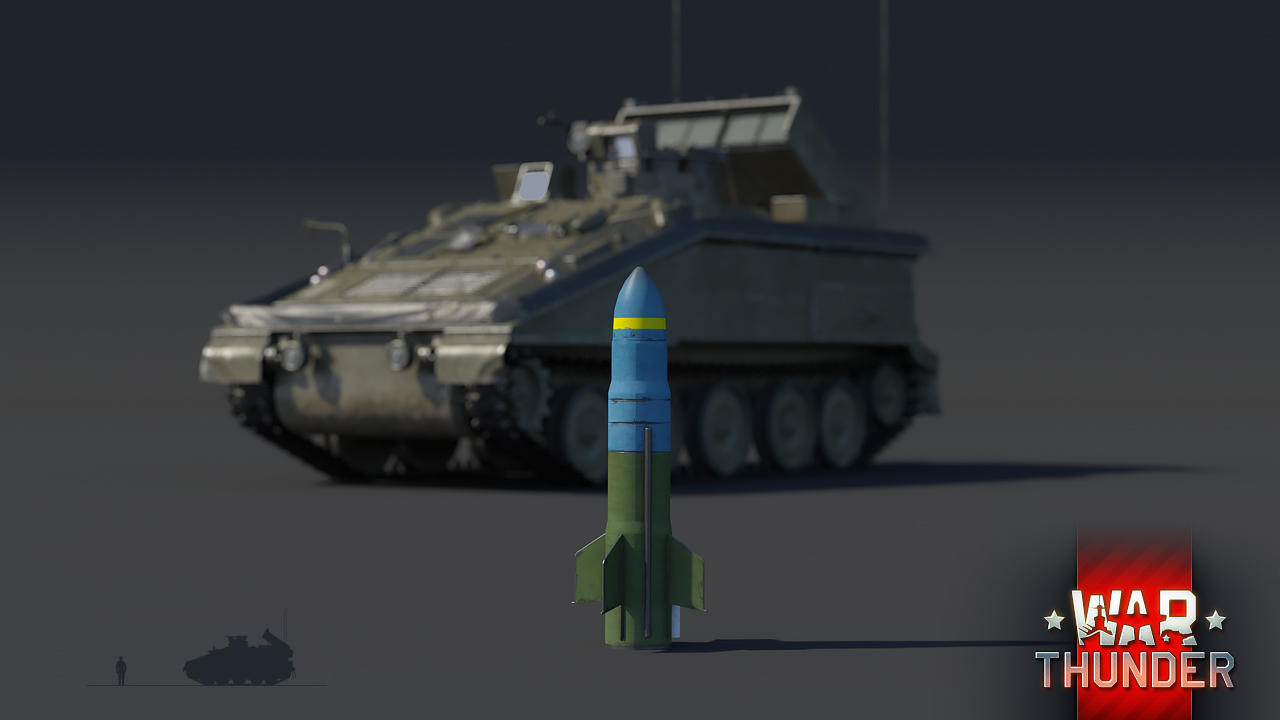 |
 |
The Striker in War Thunder will not only provide fans of British vehicles with a much sought after addition, but will also add a very deadly weapon to the British high rank arsenal. Smaller and faster than the FV438 Swingfire, the Striker will be able to deliver its deadly payload of five improved Swingfire ATGMs to the target potentially unnoticed. Yes, you didn’t misread anything - five ATGMs. The Striker has a five-tube ATGM launcher, which can fortunately be reload in battle, but only once. The Striker, unlike the FV438, will feature a Mk.2 Swingfire ATGM system. This improved system not only boosts the penetration values of the Swingfire missile itself, but also provides commanders of the FV102 with a second generation semi-automatic aiming system, making targeting substantially easier. A common feature of both the Striker and the Swingfire is their armour protection. Both vehicles featured a similar maximum armor thickness, or around 12.7mm, however, whilst the Swingfire used steel, the Striker used aluminum, thus greatly saving on weight. Nevertheless, this change didn’t bolster the survivability of the Striker, in fact, the vehicle’s protection was suitable only against small arms fire and shrapnel, whilst dedicated AP bullets and cannon rounds would simply tear through the thinly armoured Striker.
Download Wallpaper: 1280x1024 | 1920x1080 | 2560x1440
To counter this, the FV102 Striker relies on its low silhouette and mobility to act as a shield against enemy fire, instead of physical armour. The combining factors of low ground pressure, lightweight armour and a good power to weight ratio, gave the Striker superb mobility both on-and off-road. Its 190 horsepower diesel engine allowed the FV102 to reach breakneck speeds of up to 80 km/h (50 mph) on roads, whilst still retaining a good speed even on rough terrain. Thanks to the excellent mobility, players will be able to quickly position the Striker into an ambush position early on in a match, whilst the low height of the hull will ensure that the vehicle will remain undetected at least up until the point when the first missile is fired.
The FV102 Striker will join the top ranks of the British ground forces tree as the successor of the FV438 Swingfire in the upcoming 1.71 update for War Thunder. See you there!
Check our previous devblogs:
The War Thunder Team
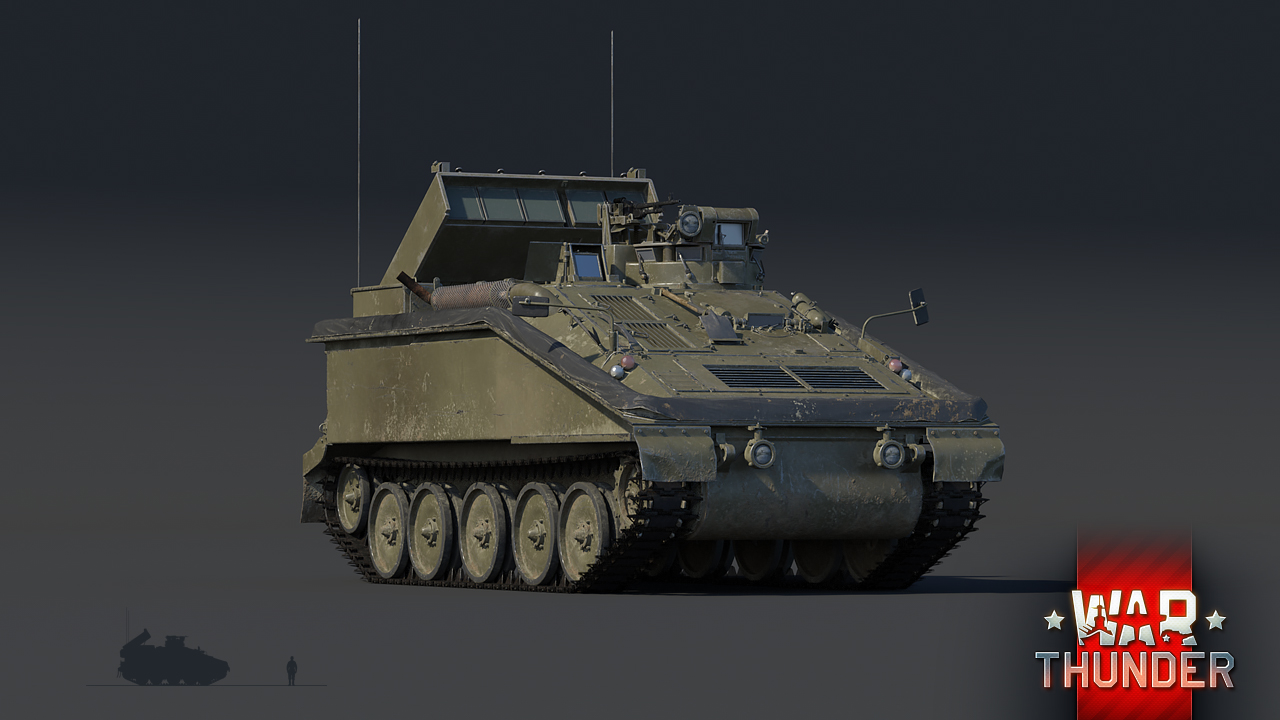
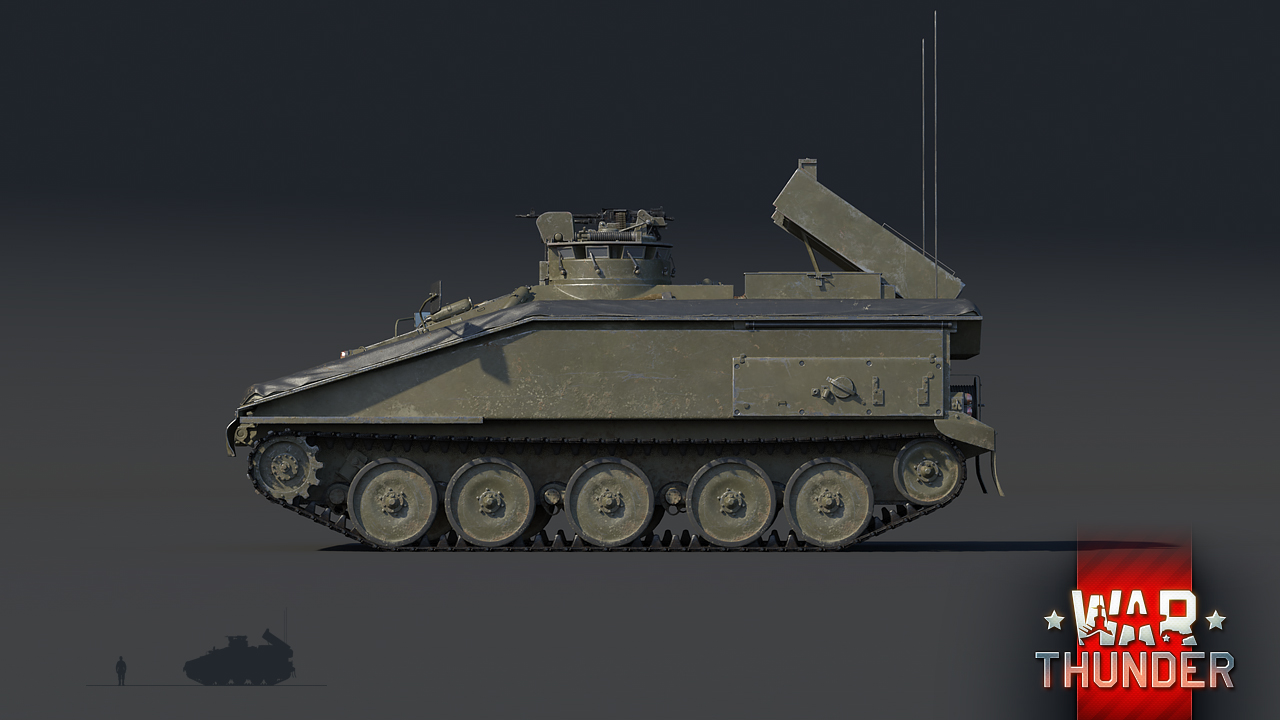
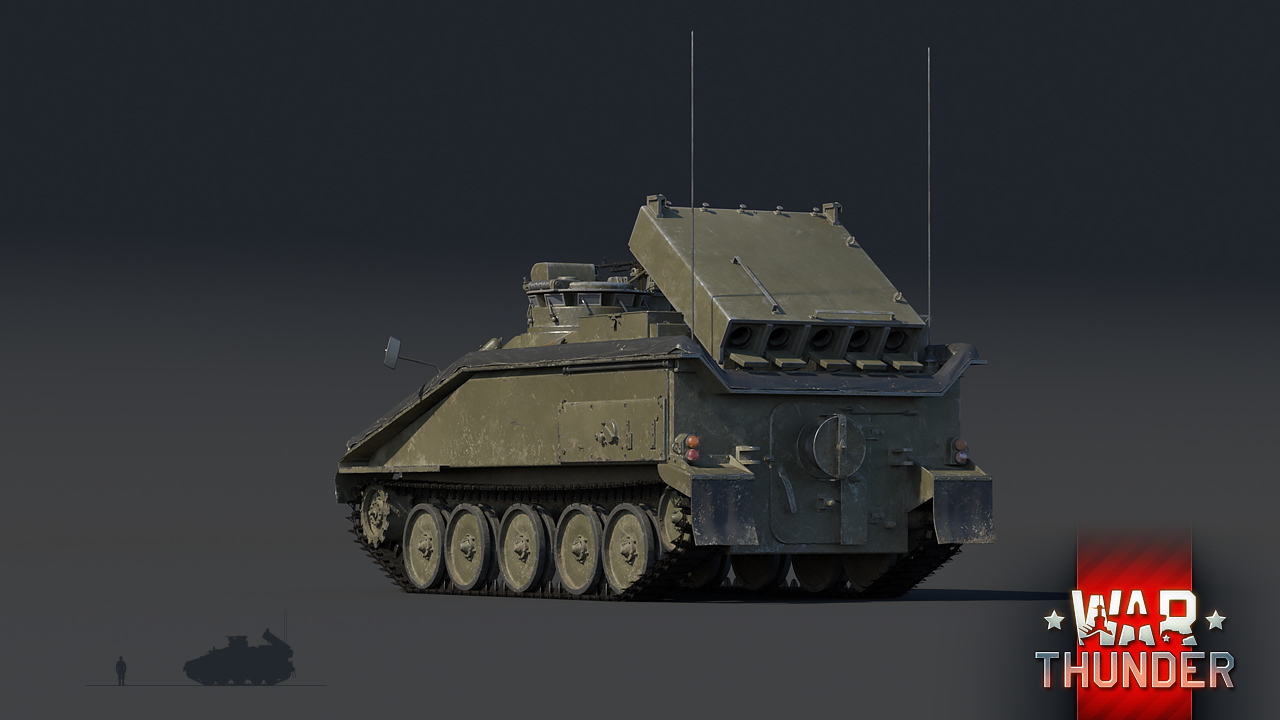
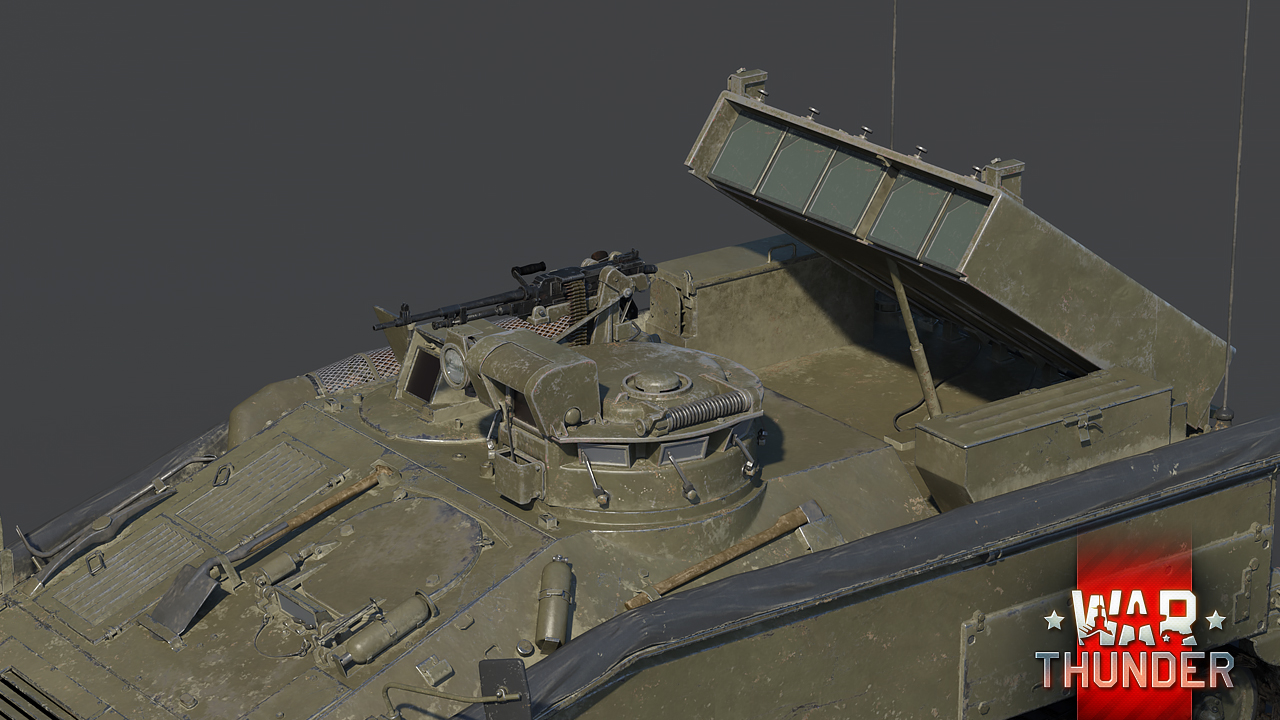
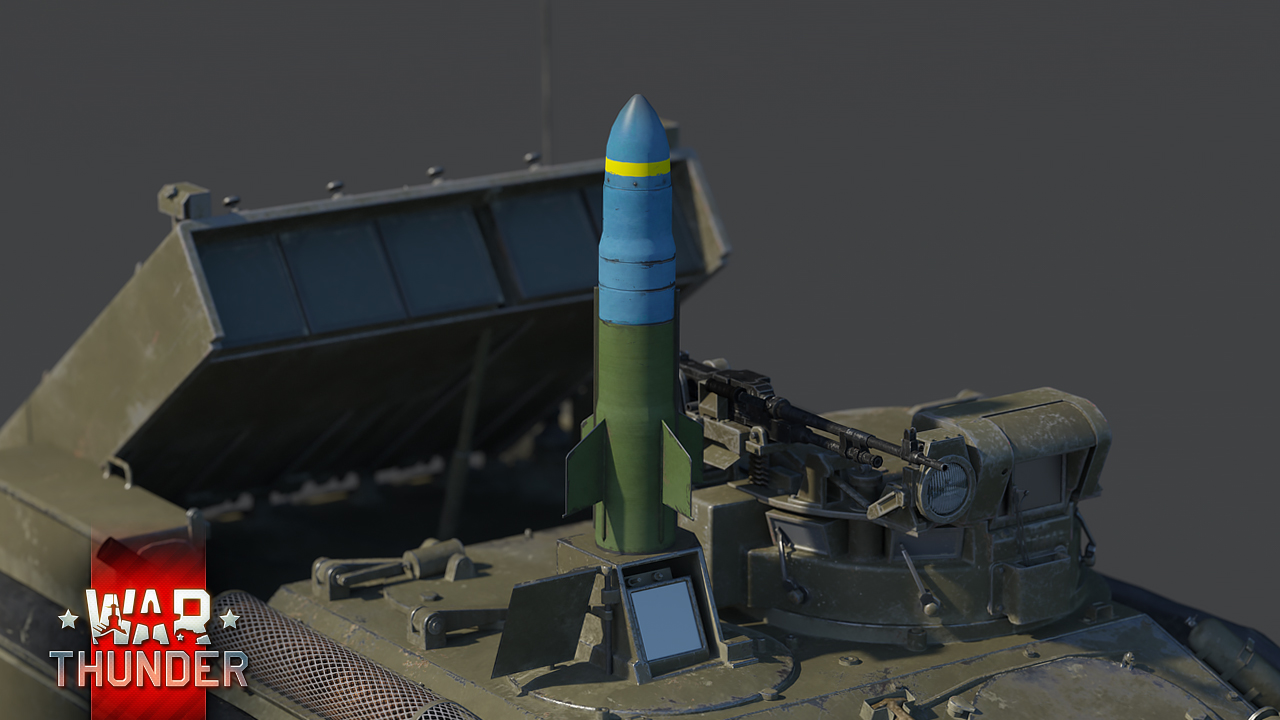




Comments (109)
doesn't the swingfire already have 2nd gen aiming in-game?
The most important part here is that striker, at least, will get the corret pen for SWIG modified Swingfire ATGM.
Is it going to have the same issue as the swingfire that it'll be useless in majority of the maps as you have to be 400m away before firing?
Jeasus its a freaking MLRS!!!